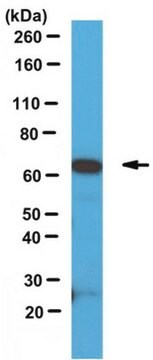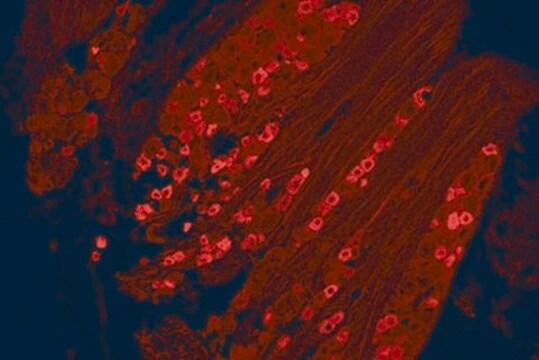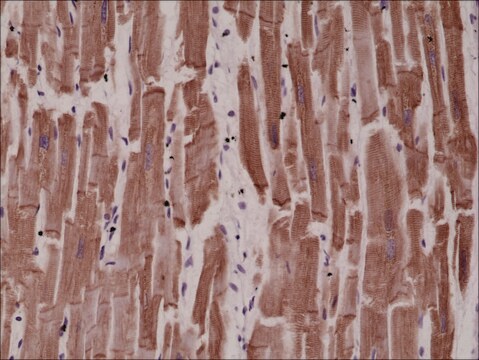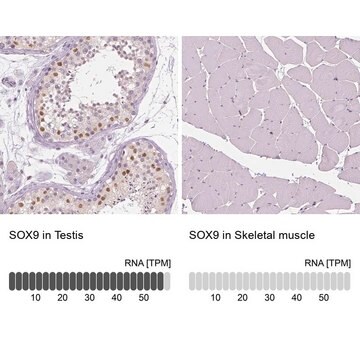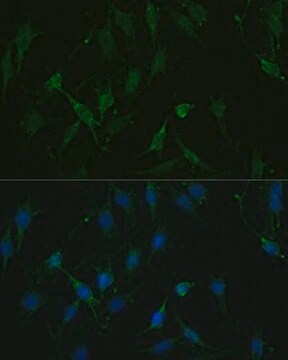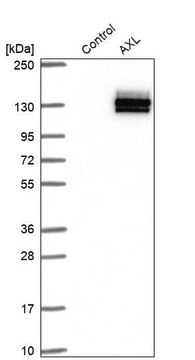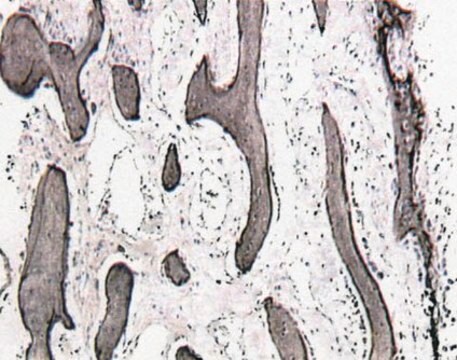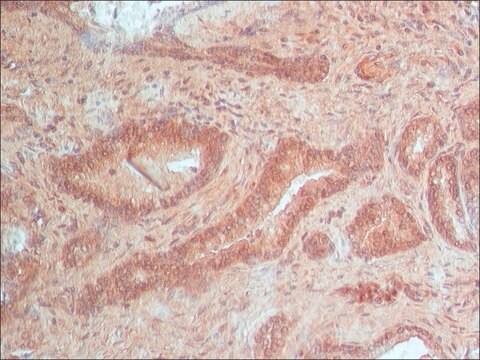ABS526
Anti-Perilipin-4, N-term Antibody
0.1 mg/mL, from rabbit
Sinónimos:
Perilipin-4, Adipocyte protein S3-12
About This Item
Productos recomendados
biological source
rabbit
antibody form
affinity isolated antibody
antibody product type
primary antibodies
clone
polyclonal
purified by
affinity chromatography
species reactivity
mouse
concentration
0.1 mg/mL
technique(s)
immunocytochemistry: suitable
immunohistochemistry: suitable
western blot: suitable
NCBI accession no.
UniProt accession no.
shipped in
wet ice
target post-translational modification
unmodified
Gene Information
mouse ... Plin4(57435)
General description
Immunogen
Application
Immunocytochemistry Analysis: A representative lot detected Perilipin-4 in 3T3_L1 cells (Wolins, N. E., et al. (2003). JBC. 278(39):37713-37721).
Western Blotting Analysis: A representative lot detected Perilipin-4 in White Adipose Tissue (WAT) (Wolins, N. E., et al. (2003). JBC. 278(39):37713-37721).
Signaling
Signaling Neuroscience
Quality
Western Blotting Analysis: A 1:1,000 of this antibody detected Perilipin-4 in 10 µg of NIH/3T3-L1 cell lysate.
Target description
Physical form
Storage and Stability
Handling Recommendations: Upon receipt and prior to removing the cap, centrifuge the vial and gently mix the solution. Aliquot into microcentrifuge tubes and store at -20°C. Avoid repeated freeze/thaw cycles, which may damage IgG and affect product performance.
Note: Variability in freezer temperatures below -20°C may cause glycerol containing solutions to become frozen during storage.
Disclaimer
¿No encuentra el producto adecuado?
Pruebe nuestro Herramienta de selección de productos.
Storage Class
12 - Non Combustible Liquids
wgk_germany
WGK 2
flash_point_f
Not applicable
flash_point_c
Not applicable
Certificados de análisis (COA)
Busque Certificados de análisis (COA) introduciendo el número de lote del producto. Los números de lote se encuentran en la etiqueta del producto después de las palabras «Lot» o «Batch»
¿Ya tiene este producto?
Encuentre la documentación para los productos que ha comprado recientemente en la Biblioteca de documentos.
Nuestro equipo de científicos tiene experiencia en todas las áreas de investigación: Ciencias de la vida, Ciencia de los materiales, Síntesis química, Cromatografía, Analítica y muchas otras.
Póngase en contacto con el Servicio técnico